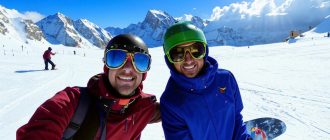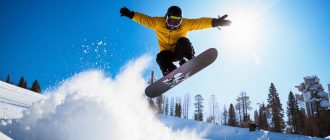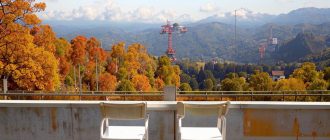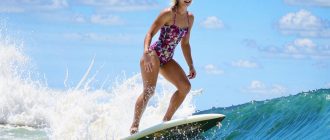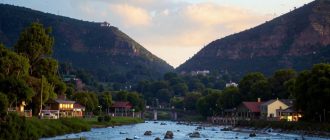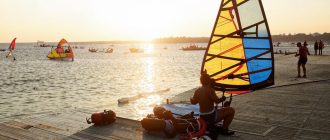After city life, wild nature beckons with its sunrises and sunsets, endless forests, clear rivers and picturesque mountains. Hiking, campfires, starry skies – city dwellers are looking for an outlet, bravely packing their backpacks. But sometimes trips to wild places end in tragedy. People die every year. A man spoiled by civilization forgets that he is not the king of nature, but only a part of it. Traveler Nina Kuryashkina was not an exception among the arrogant gore-hikers, but the crazy act ended safely. Others were less fortunate.

Nina Kuryashkina
She tells her story, which happened more than 20 years ago.
We went camping together with my colleague Galina. Our goal was to find the Kedon River. An old hunter told us that there is a lot of fish there, even a girl catches fish. There is also a hut there, where you can melt the stove and get warm. As a landmark the grandfather called “a narrow hollow between two hills”. Strangely enough, this description seemed convincing to us, and we went fishing. The place was about 20 kilometers from the station, so we expected to leave very early and return home before sunset. We took sandwiches, sugar, a kettle for tea or fish (if we catch fish), a lighter. I took a couple of sweatshirts with me. My partner wore a light sweatshirt and a denim jacket: “It’s warm in the daytime.” We didn’t take any hats, gloves or even karemats (camping mats) with us.
It is very difficult to walk on tundra glades – it is impossible to step in a measured way, because the bumps grow chaotically. My foot steps on their crest or falls into a water-filled hole between them. You need good trekking shoes – high boots or booties, fixing the ankle. I went in knee-high bogs – the usual footwear for northerners in the wilderness.
How the night went
Two local huskies joined us – we didn’t mind because we were afraid of wild animals: moose, bears and wolves roam in these parts. The first couple of hours we walked with enthusiasm, anticipating fabulous fishing, cozy hut and tasty soup. By the middle of the day the sought-after hollow had not appeared. At least, it seemed so to us. We passed one tundra glade several kilometers in diameter, then a hillside, then a glade again….
– We have to go back. Many experienced hikers died after getting lost. Can you imagine what awaits us? – I persuaded Galya.
– I can imagine – bottomless sky and a lot of fresh air! – Recklessly replied she and began to reproach me for cowardice.
Toward evening – and in these latitudes in the fall and winter darkens early – hut we still have not found, although some river crossed on foot three times. There was no trace of optimism left, and we decided to return.

The sky was covered with clouds, which made it even darker. It was obvious that we would not reach the station in the light, it would be suicide to go in the dark. Galya did not give any ideas, and could hardly restrain herself not to cry. So I decided to stop for the night in the forest tundra. There was a small patch of burned area – in summer there was a forest fire, and a kilometer-long stretch of forest was covered with terrible blackened larches. But they burn well, they are easy to break – in the peat soil after the fire they are almost not fixed by roots, it is worth pushing them harder, and the weak trunks fall. I was guided by survival instinct and fear, from which I remembered horrible stories of mountaineers and tourists who died of cold in the snow. By the way, the snow didn’t keep us waiting either – thick white flakes fell from the sky.
The ominous picture was completed by the eerie shadow of a large owl that flew silently in the night. In general, I began to fell relatively thin trees, and Galina was given a knife and instructed to cut as many branches as possible from the survivors of the fire – a coniferous plant similar to the cedar, but in the form of a shrub. I stacked the fallen trunks at an angle on top of each other to make a wall. It calmed me down, as I thought that now the beasts would not attack from behind. In the inner part of the corner we piled a huge pile of stelenik branches, laid out plastic bags and backpacks. We insulated ourselves with my sweaters and lit a fire in front of our mini-hut.

Before it finally got dark, I prepared a whole mountain of firewood, because it was beyond my strength to go after the fire in the night. The snow was getting warmer, and we burned the fire and tried to keep warm. The huskies had fallen asleep on our cot, and I cuddled one of them and tried to keep warm. The temperature dropped below 0, we drank tea and warmed ourselves by the fire. If you sit facing the fire – it gets hot for the “front” part, but the back part gets terribly cold. That’s why all night we organized such round dances – back to the fire, face to the fire and vice versa. By this time the temperature had dropped to about minus 8-10 degrees. I had to take off my T-shirt and tie it on my head – my ears were freezing.

Luck helped us to go out to the people
At half past five we set off. The worst thing was that we did not recognize the terrain at all. All tundra valleys and hills were covered with a decent layer of snow overnight, and the landscape became completely different from yesterday.
We marked a distant group of hills, sure that these were “our” hills, where the station was located. Stumbling from fatigue, we wandered forward. But by noon, when we got closer, it turned out that these hills were not ours at all. We were lost in the forest tundra. We didn’t have radios, we didn’t tell anyone where we were going, we didn’t have cell phones either, and there was no communication. The situation was desperate and frightening. We wouldn’t have survived another night – it’s a miracle that we are still okay and didn’t get frostbite. In general, though there was not much strength, I decided that the only way out was to climb all the hills in a row and look around (fortunately, I had binoculars). So another three hours passed.

We literally crawled to the top of another low (300 meters high) hillside when I noticed a small lake. Not believing my happiness, I turned my binoculars to the left and saw snow-covered houses and smoke from the chimney in the distance. The second breath opened instantly. These three kilometers we walked briskly, glad that we would not have to spend the night in the tundra anymore. By the way, we didn’t get frostbite or even cold.
What was my mistake and how to avoid such a situation
Since then I went on different hikes and was in extreme situations. But such stupid mistakes I have never repeated, because I have firmly internalized the basic rules:
- You can’t go on wild hikes without a guide. Folk wisdom: “If you don’t know the ford, don’t go into the water”. Perfect advice for beginners.
- You should have a map, compass, walkie-talkie (although it may be useless in mountainous terrain), cell phone and a tracker app that can work offline.
- The most important thing is to inform your family and friends where you are going and for how long. If the exit is extreme – register it with the Ministry of Emergency Situations.
- Regardless of the weather, you should have warm clothes in your backpack, including socks, gloves and a hat, as well as a raincoat.
- Footwear should be good. During these tundra wanderings I sprained a ligament in my foot and walked literally on willpower, overcoming the pain.
- Karemats (hiking mats) and hobas (rubber band seats worn on the hips) – these simple things will save you from hypothermia.
- Food should be stocked up too. You can take nuts, dried fruit, chocolate for a snack – all these things give you strength. If the blood sugar drops – there is a very strong weakness (I’m talking about healthy people who do not have chronic diseases). Buckwheat porridge is a good source of strength – you can boil it in the camp.
- Sealed matches, lighter, flashlight and knife should always be in your backpack.
- No matter how cold it is, you can’t sit still – you need to walk, jump, move. It is difficult, but only in this way you can avoid death from hypothermia (later I proved this theory, though not through my own fault).

By the way, some time later we managed to visit those lands on an all-terrain vehicle. It turned out that we spent the night only 300 meters away from that ill-fated hut. And from it to the station was not 20, but 50 km in a straight line, and we did not go in a straight line, making huge detours through the surrounding hills.
Have you ever had similar stories that could become the plot of a movie about survival in wild conditions? Share them in the comments.

